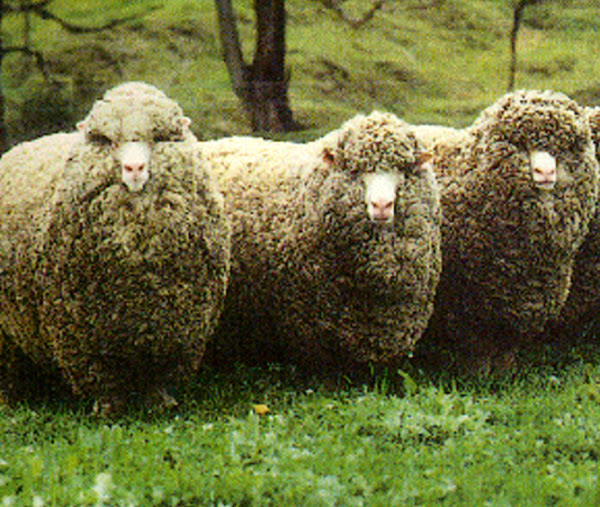The Polwarth sheep is a breed of domestic sheep from Australia. It was developed in Victoria during 1880. It was developed from Lincoln and Merino sheep breeds.
The breed actually has 25 percent Lincoln, and 75 percent Merino bloodlines. It was developed in an attempt to extend the grazing territory of sheep, because the Merino was found lacking in hardiness in this respect.
The Polwarth sheep was bred by Richard Dennis of Trandwarncoort in south West Victoria, first known as Dennis Comebacks.
Descendants of Richards Dennis continue to grow Polwarth wool at Tarndwarncoort maintaining the original bloodlines in a flock referred to as the “Blue Dots”.
The breed has been successfully exported to many countries outside it’s native country. It was particularly exported to South America, where these animals are known as “Ideals”.
An association for the breed named as the ‘Polwarth Sheep Breeders Association of Australia’ was formed in 1918, and the studbook closed in 1948. However, read some more information about this breed below.
Polwarth Sheep Characteristics
The Polwarth sheep is a medium-sized animal with very beautiful appearance. It has both polled and horned variety, with the polled types predominating.
These animals are large framed, robust and produce a high yielding, soft-handling fleece of 22-25 micron fiber diameter. The high yielding fleeces weigh an average six to seven kilograms.

The ewes are excellent prime lamb mothers producing lambs that have good lean carcass.
As a medium sized animal, average live body weight of the mature Polwarth rams is between 66 and 80 kg. And average live body weight of the mature ewes vary from 50 to 60 kg. Photo and info from ansi.okstate.edu and Wikipedia.
Uses
Polwarth sheep are dual-purpose animals. They are raised for both meat and wool production.
Special Notes
The Polwarth sheep are robust animals, and they are well suited to areas with improved pastures and are mainly found in the higher rainfall districts of southern Australia.
They are dual-purpose animals and are good for both meat and wool production. But much of the emphasis within the breed has been directed towards improving and developing the wool aspects.
Their meat is also of good quality, and these animals yield a uniformly lean carcass suitable to a number of export markets.
The Polwarth ewes make good prime-lamb dams, when mated to selected meat-breed rams. These animals are now mostly found in the higher rainfall regions of south-eastern Australia that have improved pastures.
Polwarth and Corriedale also form the main sheep breeds on the Falkland Islands. However, review full breed profile of the Polwarth sheep below.
| Breed Name | Polwarth |
| Other Name | None |
| Breed Purpose | Meat and wool |
| Special Notes | Robust animals, well suited to areas with improved pastures and are mainly found in the higher rainfall districts of southern Australia, dual-purpose animals, good for both meat and wool production, meat is of good quality, the ewes make good prime-lamb dams when mated to selected meat breed rams |
| Breed Size | Medium |
| Weight | Rams weight around 66 to 80 kg, and mature ewe’s weight vary from 50-60 kg |
| Horns | Yes or polled |
| Climate Tolerance | Native climates |
| Color | White or light brown |
| Rarity | Common |
| Country/Place of Origin | Australia |






